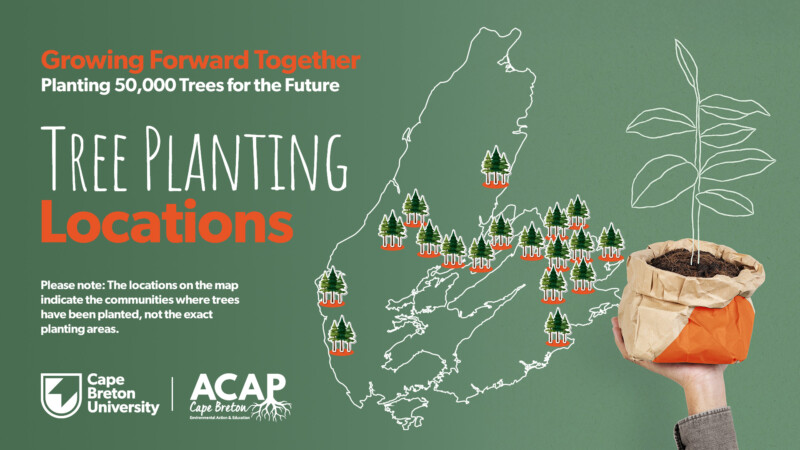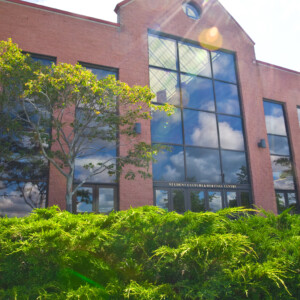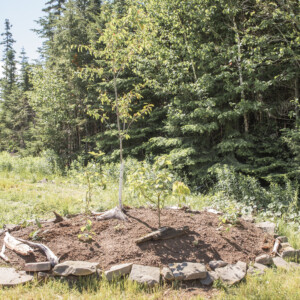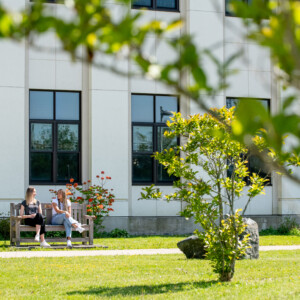Growing Forward Together Project
Planting 50,000 Trees for the Future
In partnership with the Atlantic Coastal Action Program (ACAP) Cape Breton, Cape Breton University is proud to launch the “Growing Forward Together” Project. The initiative aims to plant 50,000 trees across Cape Breton Island, with species and plants carefully selected to be adaptable to future environmental changes.
At CBU, we believe in the power of community and the importance of stewardship. For half a century, the University has been nurtured by the land and the people of Unama’ki – Cape Breton. From its humble beginnings to its present-day stature, CBU owes its success to the community that has embraced it with open arms.
As CBU celebrates its 50th Anniversary, this signature initiative is a celebration of the past, a tribute to the present and a commitment to invest in a brighter, greener future.
The trees planted through this initiative are selected for their adaptability to Cape Breton’s changing climate, ensuring they can thrive for many years. Most species are native to Nova Scotia and locally sourced whenever possible.
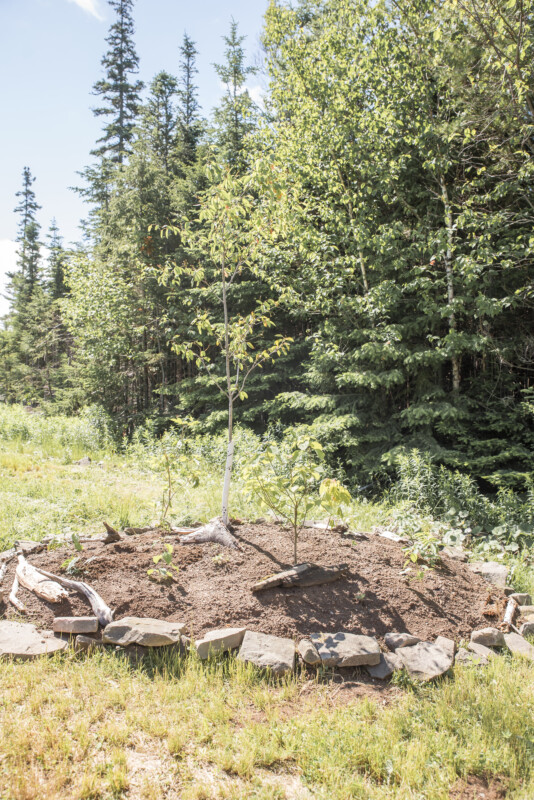 The small landscape at CBU, located behind the MacDonald Residence, serves as a model for the planting efforts at various locations across Cape Breton Island throughout the year. This area features reflective pocket forests that consist of densely planted native trees and shrubs. Each pocket includes a native mix of early succession trees, long-lived anchor trees, a shrub layer and a ground layer tailored to the location. As diversity thrives above, the same is fostered below.
The small landscape at CBU, located behind the MacDonald Residence, serves as a model for the planting efforts at various locations across Cape Breton Island throughout the year. This area features reflective pocket forests that consist of densely planted native trees and shrubs. Each pocket includes a native mix of early succession trees, long-lived anchor trees, a shrub layer and a ground layer tailored to the location. As diversity thrives above, the same is fostered below.
The primary purpose of the pocket forests is to serve as nurseries for further forest restoration. By planting a variety of native species, these pockets help support biodiversity, fostering a wide range of plant and animal species. Additionally, the pocket forests enhance soil health and carbon sequestration, contributing to a healthier and more sustainable environment.
In the long term, pocket forests boost the recovery of stable ecosystems, providing food and shelter for the Island’s wildlife. They ensure the survival and growth of trees which allows them to sequester maximum amounts of carbon and support nutrient cycling through rich soil microbiology. This approach helps create resilient, self-sustaining ecosystems that benefit both the environment and the community for generations to come.
News and Stories
List of selected species
- Serviceberry (anchor tree): early succession tree providing nectar in early spring. This tall individual is one of the first to flower after winter while also providing shade and structure to the forest pocket.
- Young red maple: hardwood species that come up through and eventually dominate the micro area.
- Mountain ash: early succession tree that lives long enough to see mid and sometimes later succession. It flowers in spring and its durable berries provide food for birds into the winter.
- Elderberries: creates a bushy divide between the pocket and the adjacent woodlot. Their flowers and berries also contribute snacks to wildlife.
- Pagoda dogwoods (shrub layer): create a sub-canopy, providing shade to hold moisture in the soil. Their flowers and berries provide food to birds and pollinators.
- Highbush cranberry (shrub layer): its flowers and berries provide fodder for wildlife like many of the other species in this assemblage.
- Wild strawberries (ground cover): spread quickly to protect the soil from sunlight and heavy rain, keep the soil in the pocket intact and provide yet another source of snacks for wildlife.
- Compost tea: composed of microbes native to the older groves of trees on campus and worm castings, which provides a diversity of microbiology to cycle nutrients and build soil.
- Biomass: collected from the adjacent woodlot to add decomposition to the nutrient cycle. It also provides a bit of cover and deterrent, protecting the young plants from browsing mammals.
